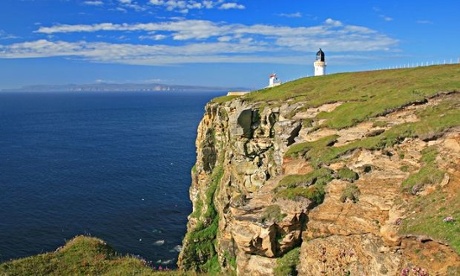
I have lived in, or near hills, almost all of my life. I spent my childhood trailing behind my older brother up the glorious hills of the southern Lake District, and my teenage years sulking off in the Montagne Noire in France. Most of my early 20s were spent in Edinburgh, a city with seven hills, including one situated gloriously in the centre.
When I lived in London for a few short periods, and during my student years at the beautiful (but flat) St Andrews, I found that I missed hills with a desperation akin to homesickness. What is it with flat landscapes? How can people be content to live away from the geological wonders which are hills? Hills interrupt the skyline, they bring spectacle and majesty to the landscape. They challenge us to scale them, slogging to their highest peak, tripping and stumbling and sweaty, until we arrive and finally turn to see the view below.
Perhaps this was one of the reasons I recently "accidentally" moved to Swanston, a small village at the foot of the Pentlands. I’d viewed a lot of places in Edinburgh on my return from London, but none of them seemed quite right. On a whim I came to see this squat blue-doored little cottage with the hills behind it, and knew instantly that I must live there. My reservations about being too far out were overruled. For a writer such a place was perfect.
My friends and boyfriend thought me rash. I have rheumatoid arthritis and Sjögren's syndrome – an auto-immune disease. Had I forgotten that, when this condition flares up, my legs would cease to work? How would I cope then, with the nearest bus-stop a mile away? The doctors told me my RA was in remission. I began to hope that this cottage would be a place where I could embrace recovery, where I could write and stride out into the hills with all the freedom of having legs that once again worked.
Why climb a hill? For me it is partly the challenge – the physicality of a large hill is uncompromising and simple, you climb it or you don’t – but also their beauty, the solitude, the unknown paths. I love the physical exhaustion of climbing after a day of work, of mental fatigue and too much coffee which leaves me jittery. The hills offer an antidote, the steep slog requiring little concentration, save that of avoiding cows and putting your feet in the right place to ensure you do not slip. In some ways I feel that hill walking is the opposite of writing, that the physicality of one is the antithesis to the cerebral nature of the other, and that is why they complement one another so.
When I finish work for the day, when I have sculpted my feature, or essay or story as much as I can that day, I tie my key into my shoelace and stride off, my hands empty, my BlackBerry on the table at home where for a short while it will not make demands of me. One evening recently, keen to get out of the house after a full day of writing, I set off into the hills which slope up from my house, reaching the peak of one at perhaps half ten. Turning I saw the lights of Edinburgh glittering at me, like a sparkling shawl which had been thrown at my feet. I felt so distant to it but so near, as though I for that moment had possession of the city below my feet, and all who inhabited it. These solitary evening walks are healing, a cleansing of the soul, drawing a line between the workaday world and the night time, the land of stories, relaxation and sleep.
But there is also something to be said for a companionable hill walking expedition with friends. Sunday is the usual day, while meat and onions brown in a slow cooker, awaiting us on our hungry return. These walks feel more grown up. You prepare, take maps, water, snacks, a torch just in case, but at the same time there is something of childhood about them, a feeling of embarking on an adventure like Enid Blyton’s famous five.
Weirdly, my knees, which will always be a bit damaged from the RA, seem to like hill walking. At least they are more forgiving of it than they are of walking on city pavements. Perhaps they too appreciate the freedom of the hills. Alone, or with others, being in the hills seems to feed something within my soul, I feel like I am reconnecting with the earth, with nature and the stories it tells. Ancient mythologies tell about spirits in trees, in brooks, the idea a yew tree was once a beautiful maiden, a stream a lovelorn boy, a cave a home for a daemon, or creature too terrible for words. An imaginative child I would swallow these stories, eager to believe that everything had life.
To walk in the hills on a June night is to feel like this again, that there is another world, a gentle magical life alongside ours, one which keeps us safe. I know this is an illusion – a mirage, that people die in hills and mountains as they do in towns and cities though the dangers are different, but to me there is a safety – a familiarity perhaps from having grown up surrounded by them – to hills and mountains which I cannot feel in urban environments.
Interested in finding out more about how you can live better? Take a look at this month's Live Better challenge here.
The Live Better Challenge is funded by Unilever; its focus is sustainable living. All content is editorially independent except for pieces labelled advertisement feature. Find out more here.

